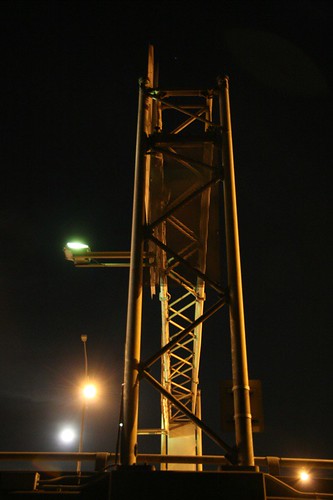
I've been slowly working my way through the excellent DVD
boxed set of John Wayne/John Ford movies that came out last summer.
Ford was the director and
Wayne was the star of these films, which range from Ford's classic Westerns ("She Wore a Yellow Ribbon," "The Searchers," "Stagecoach") to military films ("The Wings of Eagles," "They Were Expendable") and even a piece by Eugene O'Neill ("The Long Voyage Home").
Last night, I watched one of the Westerns, "Fort Apache," for the first time. Although it's not the best of Ford's Westerns, it's still quite good with an unexpectedly serious message about the arrogance and corruption of power and the importance of tradition and loyalty. Like Ford's last Western, "The Man Who Shot Liberty Valance," it focuses on the truth behind the legend and how that truth is often at odds with how history records events.
"This is the West, sir," says the newspaper man in "Liberty Valance. "When the legend becomes fact, print the legend."
In "Fort Apache," the legend in the making is Lt. Col. Owen Thursday, a stiff, by-the-book West Point graduate, played coldly against type by Henry Fonda (pictured above). Thursday has been posted to remote Fort Apache much against his wishes. He's determined to return to prominence by turning what he sees as a sloppy post into a model of obedience and regulation.
Fonda is brilliant and frightening as the isolated and arrogant Thursday. He clashes repeatedly with Wayne's Capt. Kirby York, a realist who understands the Army's complex relationship with the Apache Indians in a way Thursday never will. When York attempts to broker a truce with Cochise, the Apache chief, Thursday uses the trust between the two men to lay a trap and lure the tribe back to U.S. soil where it will be forced to return to its reservation.
When Wayne protests that he gave Cochise his word that he would be unharmed, Thursday brushes his concerns aside: "Your word to a breech-clouted savage? An illiterate, uncivilized murderer and treaty-breaker? There's no question of honor, sir, between an American officer and Cochise."
Later, when York tries to warn Thursday that he is leading the troop into a trap laid by Cochise, Thursday won't hear it. He relieves York of his command for being unwilling to lead the charge. "There's no room in this regiment for a coward," Thursday says. Thursday's charge turns in to a slaughter. But the Army, and history, unwilling to accept such blundering, turns Thursday into a hero. And York has to go along with it. How can you argue with a legend?
As he did in "She Wore a Yellow Ribbon," Ford ends with a salute to the average soldiers who suffer and die not for glory or fame but because it's their job (Wayne gets the following speech):
"The pay is thirteen dollars a month; their diet: beans and hay. Maybe horsemeat before this campaign is over. Fight over cards or rotgut whiskey, but share the last drop in their canteens. The faces may change ... the names ... but they're there: they're the regiment ... the regular army ... now and fifty years from now."
A year later, in "She Wore a Yellow Ribbon," Ford directed a similar speech (that time spoken by the narrator):
"So here they are: the dog-faced soldiers, the regulars, the fifty-cents-a-day professionals ... riding the outposts of a nation. From Fort Reno to Fort Apache -- from Sheridan to Startle -- they were all the same: men in dirty-shirt blue and only a cold page in the history books to mark their passing. But wherever they rode -- and whatever they fought for -- that place became the United States."
No doubt, Ford's World War II service in the Navy informed his view of the "dog soldiers" who suffered, sweat, bled and died while their superiors got fame and honors.
"Fort Apache" shows Ford maturing in to a serious filmmaker able to take a popular genre and populate it with complex themes. Its portrait of a commander insulated from reality who blunders into a military disaster is even more relevant today than when the film was made in 1948.
Maybe it's time for a remake.








































